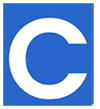Cerebral palsy is a condition that occurs in childhood as a result of non-progressive damage to the brain, usually leading to loss of function in the arms and legs. Cerebral palsy may result from brain damage due to complications during birth, or it may develop due to diseases affecting the brain in infancy. Whatever the reason, the findings are divided into two main groups. Cognitive dysfunctions and motor dysfunctions. In the first case, the child's intelligence, perception and speech are affected, while in motor disorder, movement functions are affected. These two conditions can occur together or can be observed separately. In other words, while the child's intelligence is normal, loss of function in his hands, arms and legs may occur. These children cannot do the things their peers do (motor retardation). Otherwise, while the child's movement functions are normal, his intelligence may be affected. This effect may be mild or severe.
The basic treatment of cerebral palsy is rehabilitation and special education. Because the disorder is not progressive in these patients, rehabilitation can work even in the most severely ill patients. However, the response to rehabilitation is better, especially in patients with cerebral palsy who have no or mild intellectual loss. Some of these patients may have mild functional losses. However, patients tend not to use the hand or arm where functional loss occurs. Especially patients who do not use one hand on one side forget to use that hand over time and become clumsy. The problem in these patients is that the healthy brain half suppresses the diseased brain half. Not using the O arm further increases this suppression. For example, a right-handed child will tend to do everything with his left hand and will be left-handed because he uses his right hand clumsily. Eventually, since he does not use his right hand or uses it less, his right arm will be in a much worse functional condition than it could be.
A new and promising treatment used in stroke (hemiplegia) patients in recent years is cerebral palsy. It is promising for patients. In this method, called transcranial magnetic stimulation (TMS), a part of the brain is stimulated or suppressed by subjecting it to a magnetic field at certain frequencies. Thanks to this feature of TMS treatment, paralyzed patients, especially It has begun to be used effectively in patients who cannot use one hand or arm adequately. Research on this subject has yielded positive results and TMS has been scientifically approved in stroke patients. With TMS treatment, the healthy brain is suppressed and the functions of the patient's hand, which the patient has forgotten to use, are significantly increased. If there is muscle tension in that hand or arm, the muscle tone also decreases and the hand becomes relaxed. TMS is similarly used for foot functions.
TMS is applied to the opposite brain hemisphere, which usually corresponds to the healthy half of the body in these patients. Approximately 1200 stimulations are given in each session and the treatment lasts 20 minutes. The patient does not feel any pain during the treatment. He only hears a voice. The treatment has very few side effects and is a very safe treatment.
TMS treatment is used in patients with cerebral palsy, especially if the findings are localized to one half of the patient's body (hemiplegic cerebral palsy), that is, the patient uses one hand. If a person cannot move his or her arms and legs normally, it can be used successfully and satisfactory results can be obtained. This method is not currently used in young children and infant patients.
Read: 0

